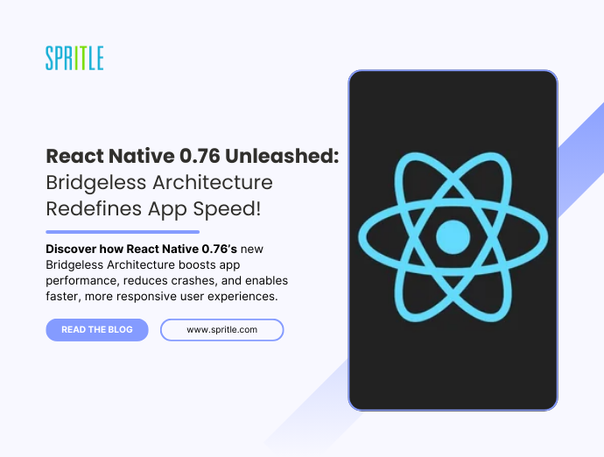React Native 0.76 Unleashed: Bridgeless Architecture Redefines App Speed!
React Native 0.76: Faster, Smoother Apps with Bridgeless Architecture! The post React Native 0.76 Unleashed: Bridgeless Architecture Redefines App Speed! appeared first on Spritle software.


React Native has officially launched version 0.76, a release that takes the framework to the next level by enabling the new architecture as the default setting. In earlier versions, this architecture was optional and required developers to opt in. But now, all new React Native projects will come with this transformative architecture, commonly referred to as the “Bridgeless” architecture. This blog dives into what makes the new React Native architecture a game-changer.

The Bridgeless architecture has been a hot topic for the past year, and with good reason. But what does “Bridgeless” actually mean, and why does it matter? To appreciate the advantages of the new architecture, let’s first review the limitations of the previous model and how this update moves beyond them.
Recap of Old Architecture

- Two Worlds of React Native are – JavaScript & Native.
- There are three threads:
a. JavaScript Thread: Handles all JavaScript bundle code execution.
b. Main/UI Native Thread: Manages native modules and updates to the user interface.
c. Background/Shadow Thread: Also known as the Yoga thread, it’s responsible for calculating layout and positioning of elements.
- The communication medium between the JavaScript and Native code is the “Bridge”.
- Components are serialized into JSON in the JS layer and sent asynchronously through bridge to the native layer, which again deserializes the code and converts the component to native component to render on screen. Also the native layer sends the JSON back when an event occurs.
Performance Issues in React Native’s Old Architecture
- Jerky or empty frames
- Dropped frames during animations
- Slow startup times
- Flickering frames on screen transitions
- Node duplication and memory leaks
- Blocking of the UI thread
- Inconsistent performance across platforms (iOS vs. Android)
Key Goals of React Native’s New Architecture:
The new architecture is designed to address the limitations of the previous version. Its key goals include:













![Galaxy S25 ‘Slim’ is probably thicker than ‘iPhone 17 Air’ as leak reveals 6.4mm design [Gallery]](https://i0.wp.com/9to5google.com/wp-content/uploads/sites/4/2025/01/galaxy-s25-slim-4.jpg?resize=1200%2C628&quality=82&strip=all&ssl=1)







